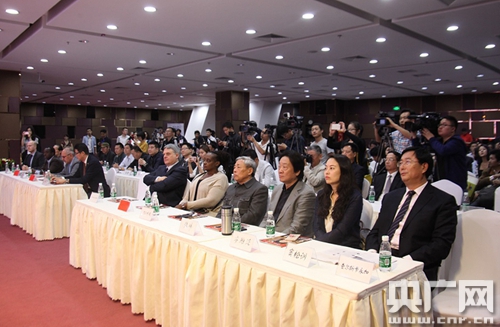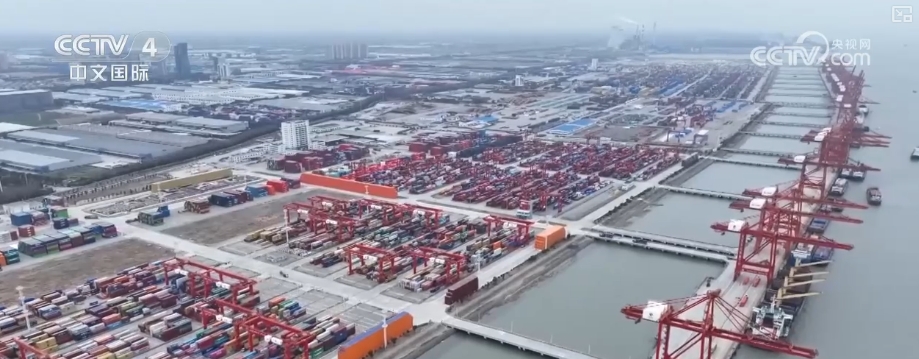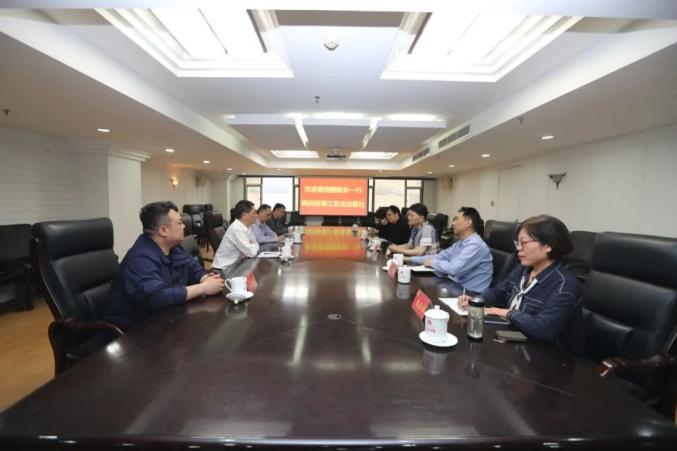"Belt And Road" Empowers Border Revitalization Xinjiang Draws A New Blueprint For The Transformation Of Economically Strong Zones
"Belt And Road" Empowers Border Revitalization Xinjiang Draws A New Blueprint For The Transformation Of Economically Strong Zones
China Economic reporter Tan Zhijuan reported from Beijing Editor's Note/Forgetting for 70 years, the Tianshan Mountains are blooming in new colors. This year marks the 70th anniversary of the founding of the Xinjiang Uygur Autonomous Region. Over the past 70 years, especially since the new era, under the leadership of the Party, people of all ethnic groups in Xinjiang have been in charge of their own affairs.
China Economic Reporter Tan Zhijuan reported in Beijing

Editor's note/Forgetting for 70 years, the Tianshan Mountains have bloomed in new colors. This year marks the 70th anniversary of the founding of the Xinjiang Uygur Autonomous Region. Over the past 70 years, especially since the new era, under the leadership of the Party, people of all ethnic groups in Xinjiang have been masters of their own country and have continuously won great victories in socialist revolution, construction, and reform and opening up. The brilliant achievements made by the Xinjiang Uygur Autonomous Region over the past 70 years fully demonstrate the significant advantages of the Party’s leadership and the socialist system, fully demonstrate the strong vitality of the correct path to solve ethnic issues with Chinese characteristics, and fully prove that the Party’s Xinjiang governance strategy in the new era is completely correct.
In 2025, the 70th anniversary of the founding of the Xinjiang Uygur Autonomous Region. After 70 years of hard work and 70 years of hard work, under the strong leadership of the Party Central Committee and under the scientific guidance of the Party’s Xinjiang governance strategy in the new era, Xinjiang’s economic and social development under the historical changes and historic achievements have been made, from a remote and backward border area in the past to a powerful economic zone with vitality today.
Looking back on the 70 years, Xinjiang's economic strength has achieved a leap forward improvement. At the beginning of the establishment of the Xinjiang Uygur Autonomous Region in 1955, the regional GDP was only 1.231 billion yuan; it exceeded 10 billion yuan in 1985, exceeded 100 billion yuan in 1997, exceeded 100 billion yuan in 2017, and exceeded 2 trillion yuan in 2024. The total import and export volume has also crossed the 100 billion yuan level, from 158.96 billion yuan in 2012 to 434.16 billion yuan in 2024; the installed capacity of new energy exceeded 100 million kilowatts... A set of data outlines the leap trajectory of Xinjiang's economy from "quantitative change" to "qualitative change", demonstrating the strong practical power of the socialist system with Chinese characteristics in the border areas.
A number of growth indicators lead the country
Today, Xinjiang has a "stable" chassis for economic growth and a stronger momentum for "advance". From the perspective of total volume, many indicators have achieved historic breakthroughs. In 2024, Xinjiang's GDP exceeded 2 trillion yuan for the first time, and the total import and export volume reached a historical high of 434.16 billion yuan; in the first half of 2025, Xinjiang's GDP increased by 5.7% year-on-year, the total fixed asset investment increased by 13% year-on-year, the total import and export volume increased by 28% year-on-year, the general public budget revenue increased by 12% year-on-year, and the total retail sales of consumer goods ranked third in the country with a growth rate of 7.5%, and the growth rate of multiple indicators led the country.
Wang Zhimin, a researcher at the National Institute of Opening-up at the University of International Business and Economics and director of the Institute of Globalization and Modernization, said in an interview with a reporter from China Business News that to achieve high-quality development, not only the east must develop, but the west must also develop, especially Xinjiang has its own special advantages.
In Wang Zhimin's view, Xinjiang's high-end manufacturing industry is developing rapidly, which is an important fulcrum for economically strong areas and an important support for the outward radiation of the "Belt and Road". For example, wind power equipment manufacturing, drone manufacturing, and energy processing.
Data released by the Statistics Bureau of Xinjiang Uygur Autonomous Region shows that in the first half of 2025, the added value of strategic emerging industries above designated size increased by 6% year-on-year, of which the added value of high-end equipment manufacturing industry, new materials industry, new energy industry, and energy-saving and environmental protection industry increased by 2 times, 6.3%, 3.9% and 22% respectively.
As the core area of the Silk Road Economic Belt, Xinjiang plays an irreplaceable multi-functional portal, hub and platform in promoting the joint construction of the "Belt and Road" initiative, and is a key hub for China to deepen its opening to the west and connect Asia and Europe.
Driven by the "Belt and Road", Xinjiang has now formed a foreign trade pattern with "Urumqi as the core, Yili and Kashgar as the two wings, and the northern slope of the Tianshan Mountains as the highland". The trade structure has also been continuously optimized: in 2024, the total import and export of goods in Xinjiang reached US$61.165 billion, and the proportion of technology-intensive products such as mechanical and electrical products, mechanical equipment and vehicle parts has gradually increased.
Wang Zhimin told reporters that because Xinjiang is a core area of the "Belt and Road" and borders eight countries around it, it is the provincial administrative region with the largest land area, the largest border neighboring countries, and the longest land border line, so Xinjiang's role in reform and opening up is irreplaceable.
Chen Weijun, member of the Standing Committee of the Party Committee of the Xinjiang Uygur Autonomous Region and Executive Vice Chairman of the Autonomous Region Government, said at a press conference held by the State Information Office on September 19 that Xinjiang actively integrates into the overall layout of the country's opening up to the west, and relies on the unique location advantages of the core area of the "Belt and Road" to accelerate the construction of "one port, two districts, five centers, and port economic belts", and the door to opening is getting bigger and bigger. A series of preferential policies such as several measures to support the stable development of foreign trade have been introduced, and 129 reform pilot tasks of the free trade pilot zone have been fully launched, of which more than 80 have been implemented and phased results have been achieved. Various economic and trade activities were held with high quality and trade exchanges with more than 220 countries and regions around the world. In 2024, Xinjiang held the 8th China-Europe Expo, with a total signing amount of 610 billion yuan.
New quality productivity activates new momentum
Xinjiang's leapfrog development comes from the precise grasp of national strategies and the continuous optimization of industrial structure.
From 64.7:22:13.3 in "agricultural dominance" in 1952 to 12.5:39.6:47.9 in "tertiary industry leading" in 2024, the proportion of the tertiary industry in Xinjiang's economy has reached "half of the country", marking the successful integration of Xinjiang's industrial structure and into the modern economic system.
If traditional industries are the "ballast stone" of Xinjiang's economy, then emerging industries are the "new engines" to activate regional competitiveness, and the embodiment of new quality productivity in the industrial structure focuses on two core areas: strategic emerging industries and future industries.
In terms of strategic emerging industries, Xinjiang actively cultivates strategic emerging industries such as new energy, new materials, and biomedicine to inject new vitality into economic development. Especially in the field of new energy, Xinjiang has achieved remarkable achievements. The record of new energy installation scale is constantly refreshing, showing an explosive growth trend. As of the end of 2024, Xinjiang's new energy installed capacity has historically exceeded 100 million kilowatts, becoming the first province in the northwest region with a new energy installed capacity of over 100 million. This milestone achievement marks that Xinjiang is at the forefront of the country in the field of new energy.
Wang Zhimin told reporters that Xinjiang's development is a concentrated reflection of the development of new quality productivity. Xinjiang's development conforms to China's industrial structure upgrading, transforming from high-speed growth to high-quality growth. At present, Xinjiang's "new three" industries represented by electric vehicles, lithium batteries and solar cells have good development momentum.
The computing power economy has become a dazzling business card for Xinjiang's new quality productivity. Wang Zhimin said that the scale of computing power in Xinjiang is growing rapidly and is expected to become China's computing power center in the future. "Xinjiang has sufficient electricity and unique conditions." It is reported that Urumqi, Hami, Changji and other places have built new energy bases of tens of millions of kilowatts, which can provide computing power companies with rich green power resources.
Data shows that more than 33,000 P computing power clusters have been built in Urumqi, Karamay and other places, with the goal of exceeding 100,000 P by 2025. Among them, Karamay City's computing power scale reached 17,000 P in 2024, becoming the first city in Xinjiang with a computing power scale of over 10,000 P in the country.
Hao Junqing, deputy director of the Statistics Bureau of Xinjiang Uygur Autonomous Region, said in response to reporters' questions: "In the next stage, we must continue to cultivate and strengthen new quality productivity and continuously consolidate the foundation for the continuous recovery and improvement of the industrial economy."
Xinjiang’s 70 years of development practice profoundly confirms the far-reaching significance of “unity and stability in Xinjiang, culture nourishes Xinjiang, enriches the people and develops Xinjiang, and builds Xinjiang for a long time.” The white paper "Successful Practice of the Party's Xinjiang Governance Strategy in the New Era" points out that Xinjiang fully implements the new development concept, continues, healthy and rapid economic development, comprehensively strengthens infrastructure construction, fully manifests the cluster effect of a modern industrial system, and the background color of green and low-carbon development is more sufficient, the pace of construction of the core area of the Silk Road Economic Belt has accelerated, and great achievements have been made in the practice of Chinese-style modern Xinjiang.





